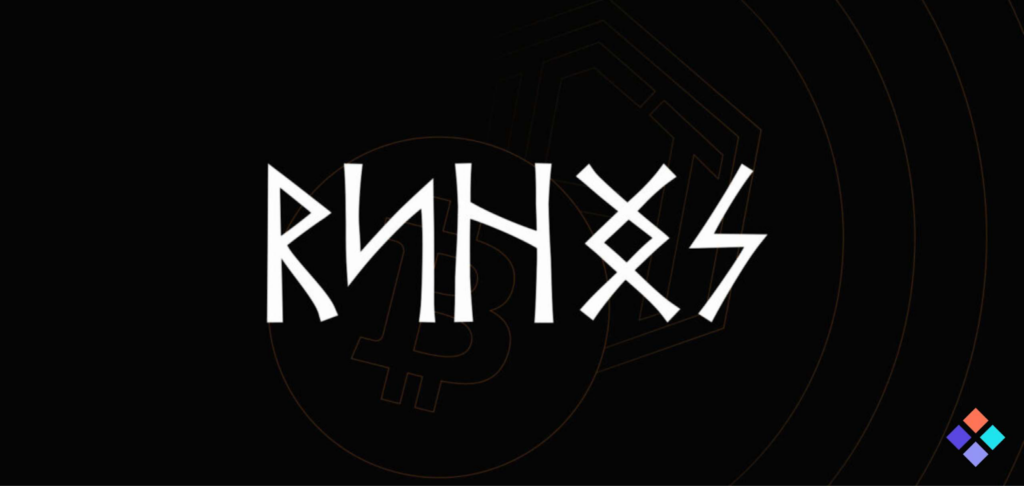Table of Contents
The world of cryptocurrency has witnessed a series of pivotal moments, each with the potential to reshape the industry’s trajectory. Among these pivotal developments, the emergence of the Runes token standard and the impending review of the OP_CAT Bitcoin proposal (Bitcoin Improvement Proposal (BIP)) in 2025 stand out as catalysts that could ignite a new era of innovation and widespread adoption for the Bitcoin blockchain.
The launch of the Runes protocol in April 2024, coinciding with Bitcoin’s fourth scheduled halving, has already sparked a surge of investment activity, with over 7,000 Runes tokens minted in the first two days alone. This flurry of activity has drawn comparisons to the “DeFi Summer” of 2021, when the launch of various decentralized applications and tokens led to a sudden influx of liquidity into the Ethereum blockchain. However, the significance of the Runes protocol extends beyond a mere momentary fad, as it could play a crucial role in enabling liquid staking, investment activity, Layer-2 expansion, and decentralized finance (DeFi) innovation within the Bitcoin ecosystem.
Navigating Bitcoin’s Challenges
Despite Bitcoin’s impressive market capitalization and its status as a premier store of value, the cryptocurrency has faced challenges in terms of its utilization as an investment asset. As of early April 2024, approximately 65% of the Bitcoin supply had remained dormant for more than a year, indicating that a significant portion of investors have been hesitant to actively deploy their BTC holdings. This conservative approach can be attributed to various factors, including the lack of sustainable yield opportunities, the absence of institution-friendly yield products, and the perceived risks associated with moving or deploying Bitcoin assets.
To address these challenges, a quiet revolution has been underway within the Bitcoin ecosystem, with persistent efforts to transform the cryptocurrency from a store of value into a vibrant financial ecosystem. These efforts have primarily focused on two key priorities: enhancing Bitcoin’s programmability and improving its capital efficiency.
Enhancing Bitcoin’s Programmability
The current Bitcoin network does not offer smart contract functionality, which reduces the complexity and the risk of security breaches but also constrains the development of decentralized applications (dApps) and scalability. The absence of logical loops and conditions on the Bitcoin blockchain has hindered the creation of more sophisticated financial applications and limited the network’s potential for active, yield-generating investment activities.
However, the OPCAT Bitcoin Proposal, expected to undergo review in 2025, could be a game-changer. This landmark proposal aims to reinstate the smart contract functionality that was initially disabled by Satoshi Nakamoto in 2010. If approved, OPCAT would empower the use of logical loops and conditionals, allowing for the creation of rules or conditions on how Bitcoin can be spent. This would open the door to a wide range of development possibilities, including the creation of Layer-2 solutions, smart contracts, and enhanced chain interoperability.
Improving Capital Efficiency
In addition to the limitations in programmability, Bitcoin has also faced challenges in terms of capital efficiency. Despite its high market capitalization and significant investor buy-in, BTC has been critically underutilized as an investment asset. This is evidenced by the fact that a large portion of the Bitcoin supply has remained dormant for extended periods, indicating a reluctance among investors to actively deploy their holdings.
Efforts to address this issue have focused on developing solutions that can improve the capital efficiency of Bitcoin. These include the creation of decentralized finance (DeFi) primitives, such as decentralized exchanges (DEXs), money markets, vaults, oracles, and stablecoins, all designed to leverage the economic security and robustness of the Bitcoin network.
Projects like Stacks, Merlin, and B2, which are general and purpose-built Layer-2 solutions, have been expanding their own Bitcoin DeFi (BTCFi) ecosystems. Additionally, initiatives such as Babylon are bridging the gap between Proof-of-Work and Proof-of-Stake models, further accelerating the development of DeFi applications within the Bitcoin ecosystem.
The Runes Protocol: A Stepping Stone
The launch of the Runes token standard in April 2024 has been a significant milestone in the evolution of the Bitcoin blockchain. Designed to streamline the generation of Bitcoin-native fungible tokens, the Runes protocol has sparked a surge of investment activity, with over 91,000 Runes tokens created on the Bitcoin network to date, accompanied by $4.5 million in transaction fees paid to miners.
While the initial frenzy surrounding the Runes launch may have drawn comparisons to the “DeFi Summer” of 2021, the protocol’s potential impact extends beyond a mere passing trend. The Runes standard could prove instrumental in enabling liquid staking, investment activity, Layer-2 expansion, and DeFi innovation within the Bitcoin ecosystem, laying the groundwork for a more vibrant and versatile financial landscape.
The OP_CAT Bitcoin Proposal: A Catalyst for Innovation
The OP_CAT Bitcoin Proposal, expected to undergo review in 2025, could be the catalyst that ignites a new renaissance for the Bitcoin blockchain. This landmark proposal aims to reinstate the smart contract functionality that was previously disabled by Satoshi Nakamoto, allowing for the creation of rules or conditions on how Bitcoin can be spent.
If approved, the adoption of OP_CAT could fundamentally transform how people leverage Bitcoin, opening the door to a wide range of development possibilities. Innovators would finally have a secure avenue to adapt Bitcoin’s programmability for critical use cases, such as decentralized finance, scaling, and chain interoperability. This could lead to an influx of capital into BTC yield-generating protocols, as the growing attraction of Bitcoin for DeFi expansion and the development of a secure and robust infrastructure would make the network more appealing to investors.
Overcoming Hurdles and Embracing the Future
While the full potential of Bitcoin DeFi (BTCFi) may still be a few years away, it is crucial to lay the groundwork for its future success. The fragmentation of liquidity and yields as individual Layer-2 and DeFi ecosystems emerge and grow is a hurdle that will need to be addressed. Additionally, the general public’s familiarity with cryptocurrency concepts, such as bridging and DeFi usage, will be an important consideration for ecosystem advocates seeking to encourage mainstream adoption.
Despite these challenges, the pieces are in place for significant innovation and adoption within the Bitcoin ecosystem. The collective efforts of the community, from individual contributors to industry leaders, will be instrumental in realizing the vision for Bitcoin and DeFi integration. As the quiet moments of advancement and preparation continue, the stage is set for the Bitcoin blockchain to undergo a transformative renaissance, unlocking unprecedented opportunities for investment, development, and mainstream adoption.
The Runes Protocol: Igniting a New Era

The launch of the Runes token standard in April 2024 has been a pivotal moment in the evolution of the Bitcoin blockchain. Designed to streamline the generation of Bitcoin-native fungible tokens, the Runes protocol has sparked a surge of investment activity, with over 91,000 Runes tokens created on the network to date.
While the initial frenzy surrounding the Runes launch may have drawn comparisons to the “DeFi Summer” of 2021, the protocol’s potential impact extends beyond a mere passing trend. The Runes standard could prove instrumental in enabling liquid staking, investment activity, Layer-2 expansion, and DeFi innovation within the Bitcoin ecosystem, laying the groundwork for a more vibrant and versatile financial landscape.
Enhancing Bitcoin’s Programmability
One of the key challenges facing the Bitcoin network has been the lack of smart contract functionality. The current Bitcoin network does not offer this capability, which reduces complexity and the risk of security breaches but also limits the development of decentralized applications (dApps) and scalability.
The OPCAT Bitcoin Proposal, expected to undergo review in 2025, could be a game-changer in this regard. This landmark proposal aims to reinstate the smart contract functionality that was initially disabled by Satoshi Nakamoto in 2010. If approved, OPCAT would empower the use of logical loops and conditionals, allowing for the creation of rules or conditions on how Bitcoin can be spent. This would open the door to a wide range of development possibilities, including the creation of Layer-2 solutions, smart contracts, and enhanced chain interoperability.
Improving Capital Efficiency
In addition to the limitations in programmability, Bitcoin has also faced challenges in terms of capital efficiency. Despite its high market capitalization and significant investor buy-in, BTC has been critically underutilized as an investment asset, with a large portion of the supply remaining dormant for extended periods.
Efforts to address this issue have focused on developing solutions that can improve the capital efficiency of Bitcoin. These include the creation of decentralized finance (DeFi) primitives, such as decentralized exchanges (DEXs), money markets, vaults, oracles, and stablecoins, all designed to leverage the economic security and robustness of the Bitcoin network.
Projects like Stacks, Merlin, and B2, which are general and purpose-built Layer-2 solutions, have been expanding their own Bitcoin DeFi (BTCFi) ecosystems. Additionally, initiatives such as Babylon are bridging the gap between Proof-of-Work and Proof-of-Stake models, further accelerating the development of DeFi applications within the Bitcoin ecosystem.
The OP_CAT Proposal: A Catalyst for Innovation
The OP_CAT Bitcoin Proposal, expected to undergo review in 2025, could be the catalyst that ignites a new renaissance for the Bitcoin blockchain. This landmark proposal aims to reinstate the smart contract functionality that was previously disabled by Satoshi Nakamoto, allowing for the creation of rules or conditions on how Bitcoin can be spent.
If approved, the adoption of OP_CAT could fundamentally transform how people leverage Bitcoin, opening the door to a wide range of development possibilities. Innovators would finally have a secure avenue to adapt Bitcoin’s programmability for critical use cases, such as decentralized finance, scaling, and chain interoperability. This could lead to an influx of capital into BTC yield-generating protocols, as the growing attraction of Bitcoin for DeFi expansion and the development of a secure and robust infrastructure would make the network more appealing to investors.
Overcoming Hurdles and Embracing the Future
While the full potential of Bitcoin DeFi (BTCFi) may still be a few years away, it is crucial to lay the groundwork for its future success. The fragmentation of liquidity and yields as individual Layer-2 and DeFi ecosystems emerge and grow is a hurdle that will need to be addressed. Additionally, the general public’s familiarity with cryptocurrency concepts, such as bridging and DeFi usage, will be an important consideration for ecosystem advocates seeking to encourage mainstream adoption.
Despite these challenges, the pieces are in place for significant innovation and adoption within the Bitcoin ecosystem. The collective efforts of the community, from individual contributors to industry leaders, will be instrumental in realizing the vision for Bitcoin and DeFi integration. As the quiet moments of advancement and preparation continue, the stage is set for the Bitcoin blockchain to undergo a transformative renaissance, unlocking unprecedented opportunities for investment, development, and mainstream adoption.
Conclusion
The emergence of the Runes token standard and the impending review of the OP_CAT Bitcoin Improvement Proposal in 2025 have the potential to ignite a new era of innovation and widespread adoption for the Bitcoin blockchain. By enhancing the network’s programmability and improving its capital efficiency, these advancements could fundamentally transform how people leverage Bitcoin, opening the door to a wide range of development possibilities.
While challenges remain, the pieces are in place for significant innovation and adoption within the Bitcoin ecosystem. The collective efforts of the community, from individual contributors to industry leaders, will be instrumental in realizing the vision for Bitcoin and DeFi integration. As the quiet moments of advancement and preparation continue, the stage is set for the Bitcoin blockchain to undergo a transformative renaissance, unlocking unprecedented opportunities for investment, development, and mainstream adoption.
FAQs
1)What is the significance of the Runes protocol in the Bitcoin ecosystem?
The Runes protocol could enable liquid staking, investment activity, Layer-2 expansion, and DeFi innovation within the Bitcoin ecosystem.
2)How does the OPCAT Bitcoin Proposal aim to enhance Bitcoin’s programmability?
The OPCAT Proposal aims to reinstate smart contract functionality, empowering logical loops, conditions, and rules for spending Bitcoin.
3)What are the efforts focused on to improve the capital efficiency of Bitcoin?
Efforts include creating decentralized finance primitives, BTCFi ecosystems, and bridging the gap between Proof-of-Work and Proof-of-Stake models.
4)What potential impact does the Runes standard have on the Bitcoin ecosystem?
The Runes standard could enable liquid staking, investment activity, Layer-2 expansion, and DeFi innovation within the Bitcoin ecosystem.
Disclaimer: The information contained in this article is for informational purposes only. It should not be considered as financial or investment advice. The reader should do their own research before making any financial decisions based on the information provided above. Hash Herald is not responsible for any losses in market.













